Dinosaurs weren’t the first giant plant-eaters to roam the Earth; that frontier was pioneered first among vertebrates by the dicynodonts, a group of tusked therapsids (the clade which includes modern mammals) which survived the Permian Mass Extinction and lasted to the end of the Triassic period. They ranged widely in size and distribution, from the diminutive Diictodon, to the pervasive Lystrosaurus, to giants like Lisowicia and Kannemeyeria. Dating from the Middle Triassic of South America and Africa, the ox-sized Kannemeyeria is named after the fossil collector who first discovered the animal, and one of the largest herbivores alive during its time. Despite its impressive form, however, Kannemeyeria has the disadvantage of simply not being a dinosaur, so its ubiquity in paleo-media remains somewhat limited.
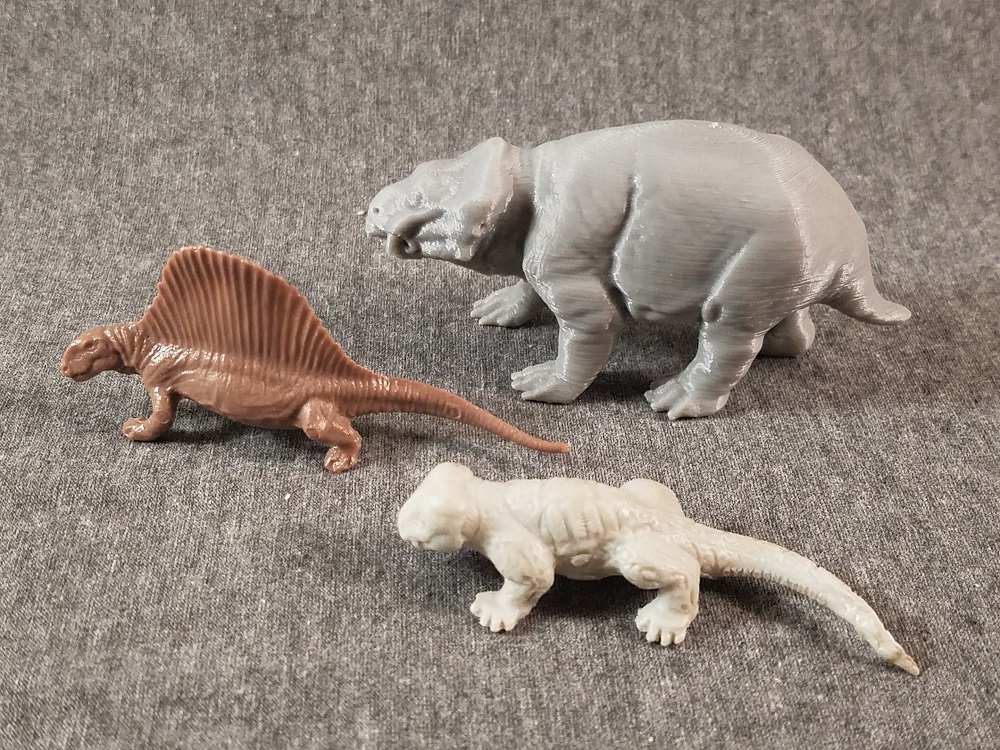
Thankfully, in the modern internet age, collectors and artists have it a little easier in regards to getting their preferred prehistoric genera out in the wild. Kannemeyeria currently has no standard plastic toys to its name yet (at least to my knowledge), but independent artist Mike Eischen has helped fill the void with a small 3D-printed model. Eischen is one of a number of artists who are producing digitally-sculpted, 3D-printed figurines out on the online market. While his Marx-styled retro T. rex figurine was the first of his catalog to catch my eye, the majority of his designs are dedicated to mammals and other synapsids, such as Kannemeyeria.

Advertised as 1/35 scale, Mike Eischen’s Kannemeyeria measures 9 cm (3.5 in) straight along the belly, or 11 cm (4.25 in) along the spinal curve; for a max-sized specimen of 3 meters, this is closer to 1/33 or 1/27 scale. The model is made of ABS plastic and appears to be hollow, with fine printing lines visible up close and a glossy finish. This model looks like it can display very nicely with classic monochrome toys like Marx and MPC, but unlike those old toys this dicynodont is not built for heavy play. This is a collectors-only piece, which should be handled delicately.
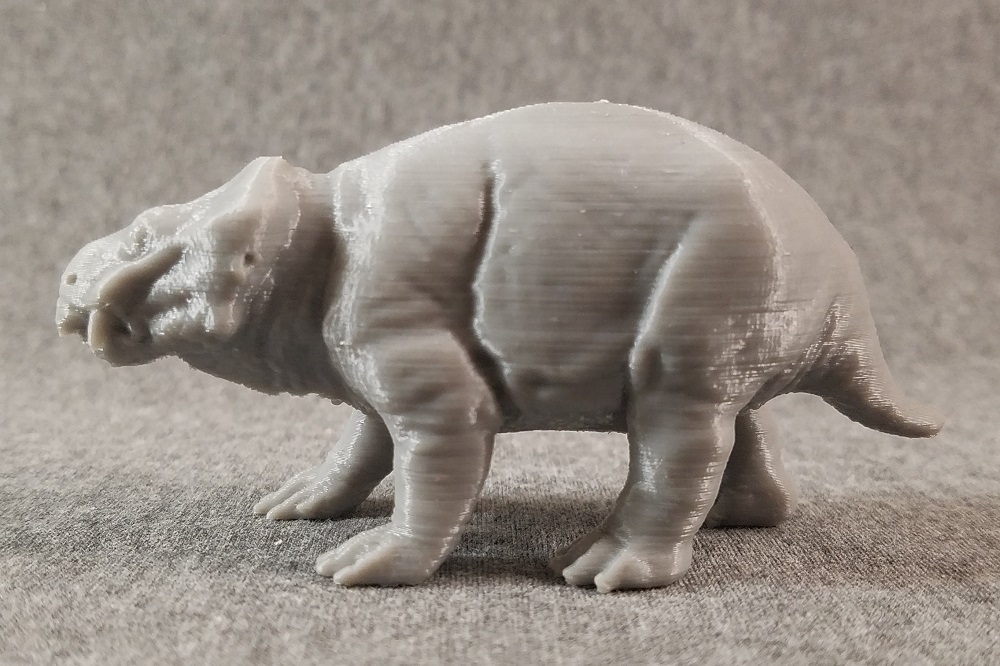
Kannemeyeria was a robust animal, which the model captures nicely. The model is posed in a casual amble, legs directly beneath the body similar to modern mammals. The head is large and displays the tall postcranial crest, although the overall skull seems a bit short. The front of the mouth features the signature beak and tusks seen in all dicynodonts. Nostrils, eyes, and earholes are all among the fine details visible on the sculpt, although the eyes look set higher than indicated by skull remains. The backbone, similarly, has a higher arch and more pronounced incline than most reconstructions I’ve seen – however, there aren’t many skeletal reconstructions out there, so Mike Eischen may be compensating for modern views on general therapsid anatomy.
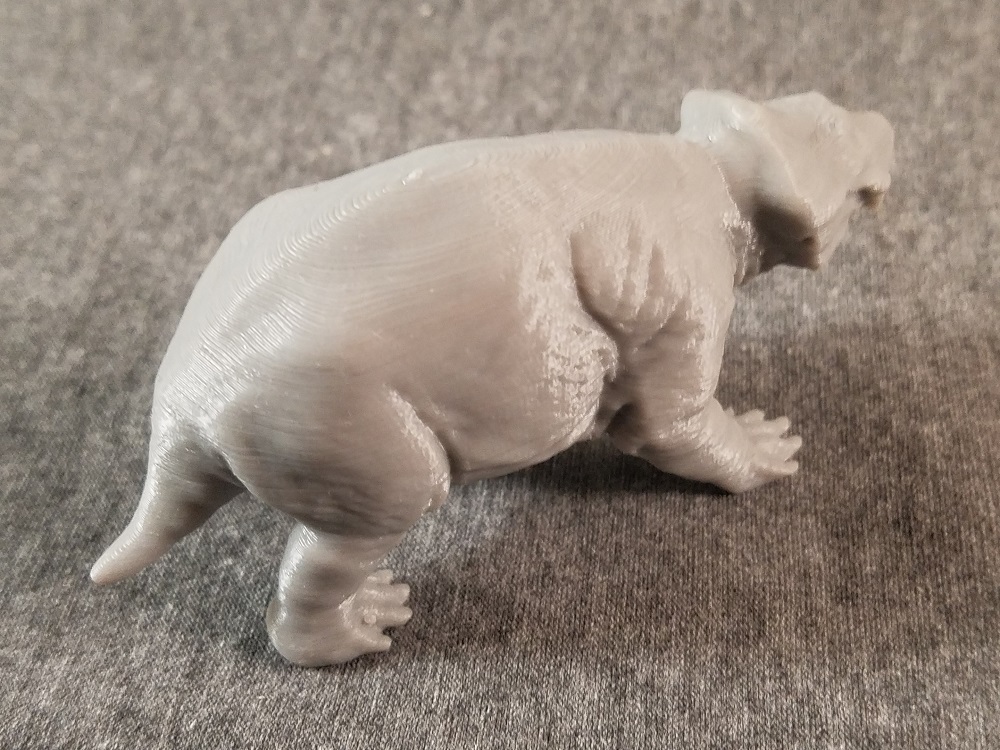
While no specific integument is discernable, the definition of skin and musculature is very good. The neck is short and stout with a deep, wattled throat, and the shoulder girdle is tall and strong. The torso is suitably round and heavy for an herbivore, with some extra folds of skin hanging from the sides of the belly. Each foot bears five simple toes, modest in length. Some production artifacts do remain on the underside, where the printing process is betrayed by swirling patches of plastic. This is within expectations for this kind of item, though (in my opinion, at least), and the overall appearance is of a convincingly hefty yet strong-bodied animal.
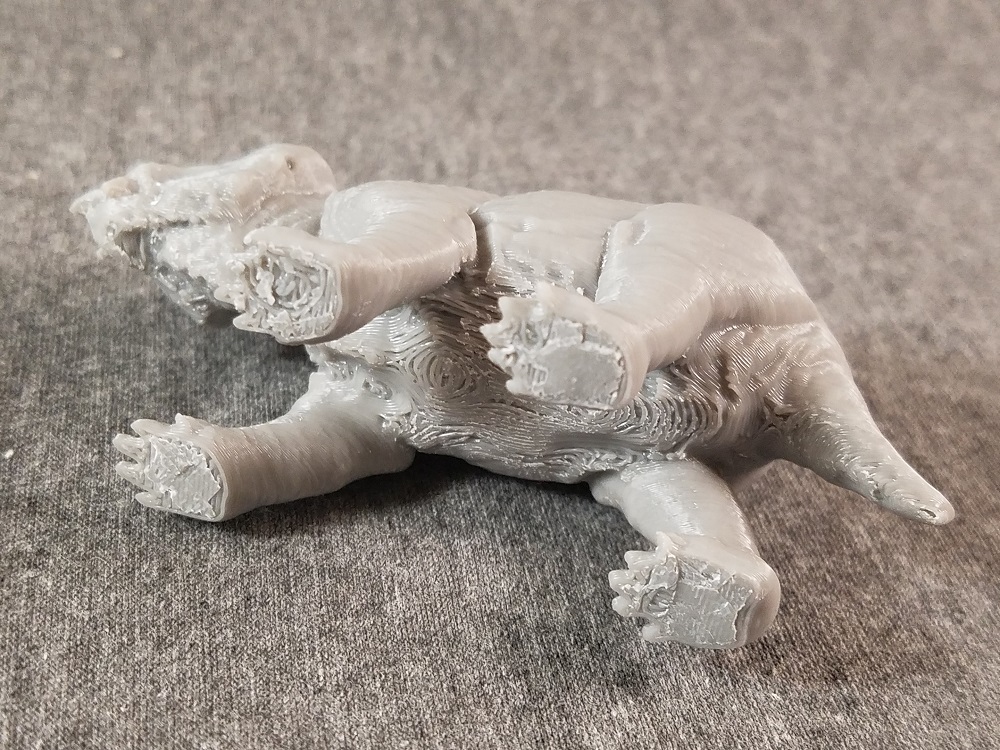
The Kannemeyeria model is molded in flat gray plastic, with a modest gloss to its makeup. No additional paint or color apps are included, but the intent of the model is for buyers to have the flexibility of customizing the model themselves. For now I’ve left mine monochrome, but collectors are encouraged to experiment with their own ideas. Note that minor sanding of the model might be advised first, to remove the lined texture resulting from the printing process. Just don’t erase those little facial features by accident! A darker resin version of the model is available too.
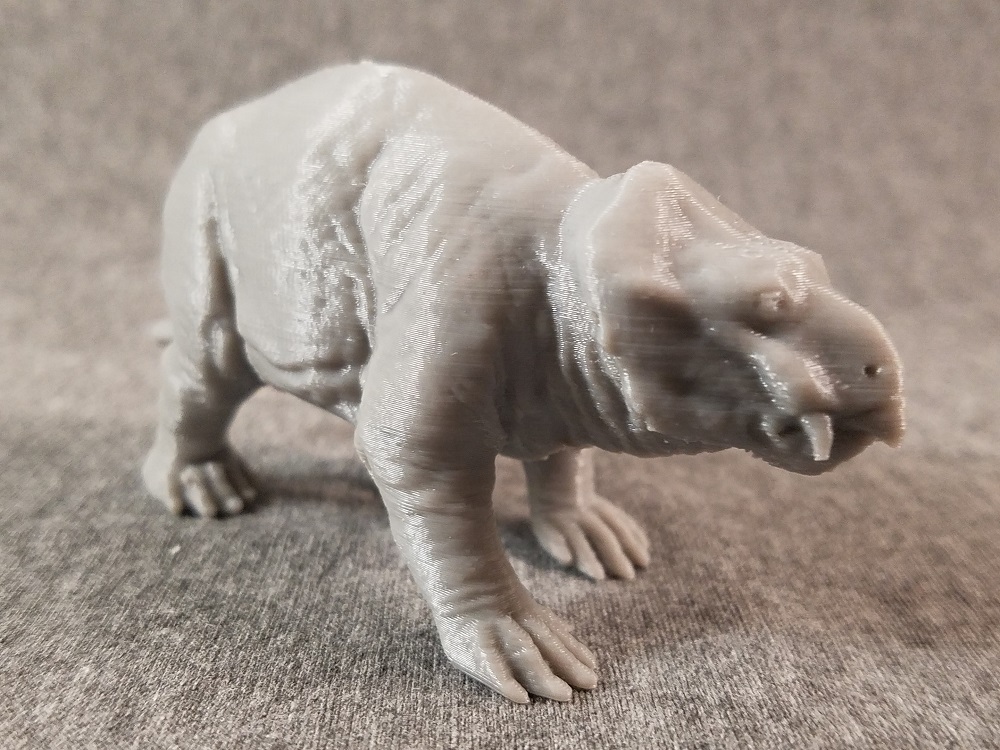
Kannemeyeria represents one of many remarkable lineages from before the dawn of the dinosaurs, and it’s a pleasure to own some version of the animal in model form. Mike Eischen’s design has a few minor quirks, but most enthusiasts should be pleased with this item. You can purchase it for yourself through Mike Eischen’s Paleo Sculpture eBay page, in addition to the rest of his prehistory catalog.
Support the Dinosaur Toy Blog by making dino-purchases through these links to Ebay and Amazon. Disclaimer: links to Ebay.com and Amazon.com on the Dinosaur Toy Blog are often affiliate links, when you make purchases through these links we may make a commission

Fantastic! The blog now has a decent selection of Dicynodonts represented. I’ve never bought a 3D printed figure before but his selection is fantastic. They do look great alongside the vintage monochrome figures too.
I was surprised – but also not that surprised – to realize Kannemeyeria didn’t have any typical toys to its name yet, despite my own memories of it popping up frequently in multimedia; so I’m very glad this model exists and it was a pleasure to archive if for the Blog!